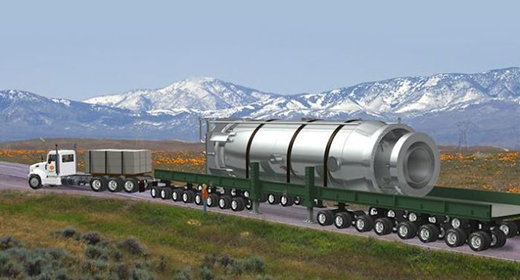by Peter Diamandis: Time to FULLY embrace nuclear. Not the old problematic nuclear plants (e.g., Three Mile Island and Fukushima),
 but advanced, fail-safe, Gen-IV nuclear systems that deserve your love and support. Next will come small modular reactors (SMRs), and then fusion plants.
but advanced, fail-safe, Gen-IV nuclear systems that deserve your love and support. Next will come small modular reactors (SMRs), and then fusion plants.
Below is a chart that should concern you. Bottom line, total electricity demand for AI by the end of this decade could consume 100% of our energy output. We need to scale electricity production FAST.
At the same time, the ongoing climate crisis demands urgent action. Global GHG emission pledges have fallen dramatically short, projecting just an 8% drop by 2030 versus the needed 43%. This gap is already intensifying floods, wildfires, and threats to ecosystems and human health worldwide.
Nuclear energy may be our only real hope for scale and safety.
In today’s blog, I’ll cover the three technologies leading this nuclear renaissance (Gen-IV, SMRs, and fusion) as well as the leading companies in each category.
Let’s dive in…
The Benefits of Nuclear Power
Nuclear energy is one of the cleanest and most reliable power sources available, preventing 2 billion tons of CO2 emissions yearly—equivalent to slashing one-third of cars globally. Nuclear energy’s low carbon footprint is staggering: a single uranium pellet rivals 1 ton of coal, delivering over 50% of U.S. carbon-free electricity.
There are 3 technologies leading this resurgence in nuclear energy:
Gen-IV Nuclear Technology
Generation-IV nuclear reactors represent a quantum leap beyond conventional nuclear plants. Using alternative coolants like molten salt and operating in closed fuel cycles, these systems dramatically improve efficiency, safety, and waste management. Since 2020, over $3 billion in private investment has flowed to Gen-IV startups, accelerated by government support programs.
Leaders in Gen-IV Technology
Kairos Power signed a groundbreaking contract with Google to deploy multiple advanced reactors, supplying 500MW of power. Founded in 2016, Kairos uses molten fluoride salt coolant and meltdown-proof fuel pebbles. Their first reactor is expected online in 2030, with additional deployments through 2035. CEO Mike Laufer notes this Google contract allows Kairos to “scale infrastructure and manufacturing capabilities.”
Terrestrial Energy, founded in 2013, is pioneering its Integral Molten Salt Reactor (IMSR). Having recently gone public in a $280 million SPAC deal, their design features a reactor core replaced every seven years to mitigate corrosion issues. Texas A&M University has selected Terrestrial to partner on a commercial IMSR plant at its RELLIS campus.
TerraPower, founded by Bill Gates in 2006, uses sodium coolant in its Natrium technology with a molten salt-based energy storage system. The 345MW base capacity can boost to 500MW for over five hours. With $1 billion in private funding and $2 billion from the DOE, TerraPower began construction in Kemmerer, Wyoming in 2024 and aims to start operations by 2030.
Small Modular Reactors (SMRs)
SMRs are revolutionizing nuclear deployment through factory-built, shippable designs that slash costs and construction time. Their smaller footprint and enhanced safety features make them ideal for replacing fossil fuel plants and powering remote locations.
Leaders in SMR Technology
NuScale Power (2007) made history as the first company to receive SMR design certification from the U.S. Nuclear Regulatory Commission. Their 77MWe modules can be deployed in various configurations, with international collaborations in Romania and Poland. Their North American project with Standard Power to produce 2GW for data centers is set to go live in 2029, potentially becoming the first operational SMRs in the US.
X-Energy secured direct investment from Amazon—the first tech company to back an advanced reactor. Founded in 2009, they recently raised $700 million led by Amazon and investors including Citadel’s Ken Griffin. Their 80MW Xe-100 reactors use helium coolant and proprietary graphite-encased fuel. X-Energy is partnering with Amazon to deliver 5GW of clean energy by 2039, with first plants expected online in the early 2030s.
Oklo, founded in 2013 and backed by Sam Altman, signed an agreement with Switch to deploy 12GW of nuclear power by 2044. Their Aurora reactor uses metallic fuel and high-assay low-enriched uranium. With environmental permits secured for its Idaho National Laboratory site, Oklo aims for operational status by 2027, making it potentially the earliest SMR to come online.
Fusion: The Ultimate Energy Source
Fusion represents the holy grail of energy: the same process powering our Sun. The 2022 breakthrough at Lawrence Livermore National Laboratory demonstrated more energy out than in for the first time, signaling that we’re approaching commercial viability.
Leaders in Fusion Technology
Helion, founded in 2013 and backed by Sam Altman, recently raised $425 million, pushing its valuation to $5.2 billion. Their field-reversed configuration directly converts plasma collisions to electricity without steam turbines. Helion has a groundbreaking deal to supply Microsoft with electricity by 2028 – years ahead of competitors. Their seventh prototype, Polaris, went online in early 2025 and could become the first fusion reactor to generate commercial electricity.
Commonwealth Fusion Systems has secured $1.8 billion in Series B funding in 2021. Their tokamak design uses high-temperature superconducting tape to generate powerful magnetic fields. In March 2025, CFS installed the cryostat base for their SPARC demonstration reactor. Backed by Breakthrough Energy Ventures and Bill Gates, CFS expects their commercial-scale Arc reactor to be operational in the early 2030s.
TAE Technologies, founded back in 1998, has raised $1.3 billion from Alphabet, Chevron Ventures, and Venrock. Their approach uses particle beams to stabilize plasma in a cigar shape. With 1,500+ patents, TAE is building their Copernicus device to demonstrate fusion-relevant conditions, targeting a commercial Da Vinci power plant generating 350-500MWe by the 2030s.
Final Thoughts
Pledges to address the climate crisis have shown to be frail and projected electricity and energy demand is set to outpace our current infrastructure. Yet this is our chance: with AI’s momentum and nuclear’s strength, humanity has an opening to turn the tide on the climate crisis, and I’m sure we’ll pull it off.
Until next time,
Peter









































